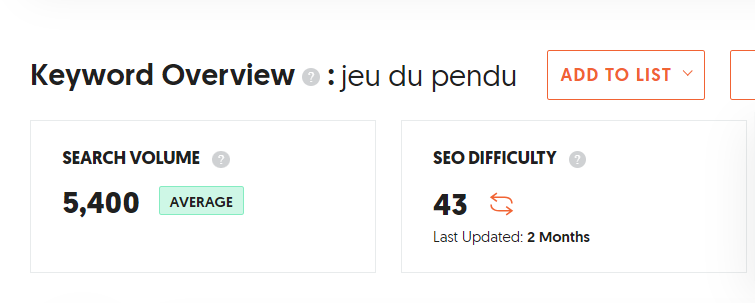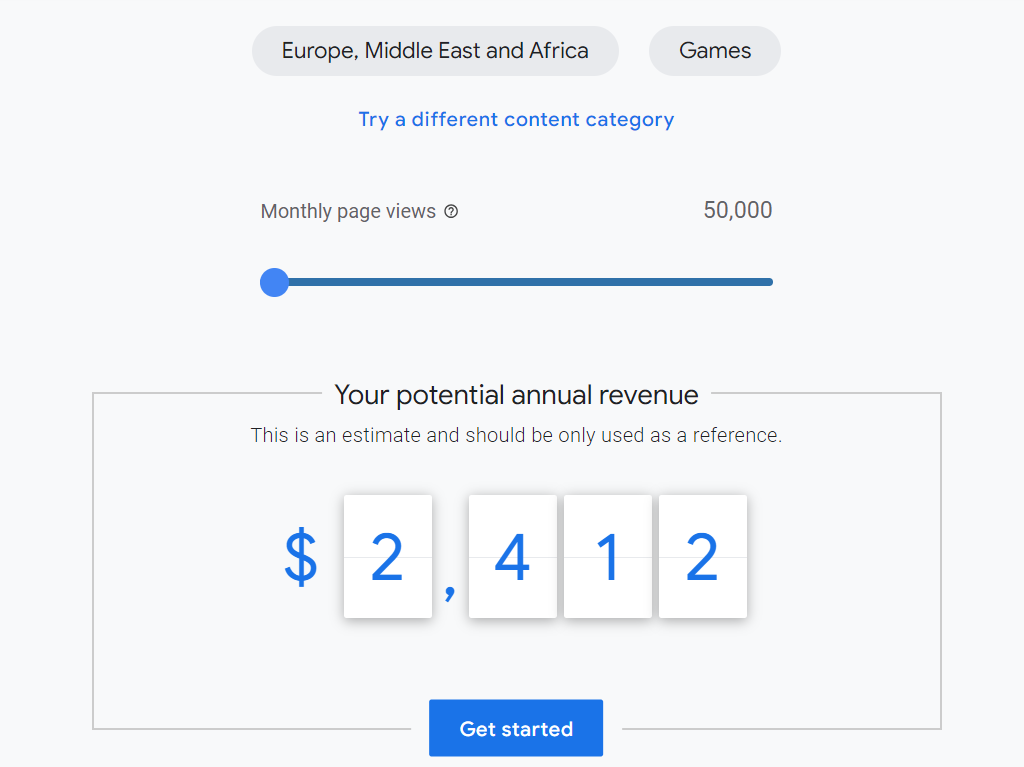There are two categories of people.
The first quit their job and tinker around for a year before going back to a job. They then say they learned so much even though they never had proper traction.
The other quit without the intention of coming back to a job. Those people usually succeed because they have no choice but to figure it out. They eventually will.
That hurt to hear this.
That was Daniel Vassallo’s answer, who runs the Small Bets community, to my question, “What did you learn from the thousands of people trying to launch products in the community?”
Before that conversation, I was tinkering for the past year or so. It was extra stingy to hear this.
It’s okay to tinker
Let me take a personal example to illustrate my point.
Back in December 2022, I bought a bunch of domains with the intention of developing them in 2023. They were all classic games in French. I got jeudupendu.com (hangman), jeudusudoku.com and lejeudusolitaire.com. I wanted to learn programming, and I thought those games would be easy enough to learn and develop on my own.
I started with jeudupendu.com because it was the easiest to do. I looked up the competition on Google and they all had crappy websites. So, after a few days of back and forth with ChatGPT 4, I launched it. I was proud.
After a few months, I saw some traffic and realized it was on the first page for the main keyword “pendu” on Bing. So I was excited and improved content on the site to rank higher.
It’s been steadily growing without much effort until I started putting up ads.
I always asked myself how I could monetize the website. But never could find a good way to do it. The traffic is too low to make any decent money. I also don’t know who’s playing, so I don’t know which products to sell. This is how much I made with Adsense since I put up ads at the end of January 2024:
Eventually, I decided to check out the search volume of the solitaire keyword and compare it to the search volume for “jeu du pendu.”
Here is the search volume for “jeu du pendu.”
I’ve been catching probably a few percent off of the top of that volume. 400-500 clicks on my website per month. Not bad.
But let’s look at the search volume for the keyword “Solitaire.”
LITTERALY 338 times more traffic. One percent of this traffic would probably get me 15,000 clicks on my website. Now, if we jump to the AdSense calculator.
With 15,000 page views, we’d probably get $750 per month in ad revenue. Much better than the meagre $1.33 I made with the other website.
I played the wrong game
I played in a small pond, and the upside was reduced because of that. It was fun to launch jeudupendu.com. But when I compare the search volume (aka the demand for the game), I would have been better off building the solitaire game. If I built that game, I’d probably get way more players and, thus, way more money.
What am I learning from this?
If I want to make serious money (something that pays the bills), I need to do realistic calculations to see how much I could potentially bring home. Obviously, the calculations need to be based on real data and use a conversion rate that’s as conservative as possible.
I’m still early to the online money-making game. So, I’m cool with the results I got. But, in the future, I don’t want to spend tons of time and money on ideas with a limited upside.
For the same amount of effort, we want to succeed and succeed as big as we can. Why spend 20 hours for $1.33 per month when I could be earning $750 per month?
Does demand = money in my pocket?
Obviously not.
There needs to be a plan for promoting and distributing the product/service.
Let me show you how I screwed up with my first Upwork course.
It had very strong signals:
A Reddit post I wrote got 200 upvotes and 150k impressions. It also ranks on the first page of Google for the keyword “how to find your first job on Upwork.”
A constant flow of people asking how to start on Upwork in the Upwork subreddit and a bunch of other places. People have no idea how to get started there.
I was chatting and helping people get started in a Discord channel for a few months. Lots of people are curious about it.
All that stuff showed me there is demand for that type of content. So, I spent 10-15 hours across a few days to record the course.
I launched it.
Then, I had no idea how to distribute it. So I scrambled on Reddit and Twitter to pitch the course whenever someone mentioned needing help with starting on Upwork or finding clients. I also plugged my course a couple of times in the Discord channel I mentioned earlier.
I made $100 like that.
The Discord channel strategy worked way better because I’d been helping and contributing for a few months already. On Reddit and Twitter, I was just pushy and not helpful. I definitely will stop doing that. It didn’t feel right. I had to go through that, though, to recalibrate my approach.
During Black Friday, I added my course to a list of deals and got more than $200 with very minimal effort. That was cool but not scalable.
$300+ of my first product money is cause for celebration. Although, it won’t pay the bills. So we need to change the scrambling approach.
Let’s try again, but better.
Before launching a second Upwork course (From 0 to $1000 on Upwork), I had to come up with a solid plan. My goal is to get to $3000.
The demand was already validated. On top of the previous analysis, I now had the Expert-Vetted badge from Upwork, sold 60+ copies of the previous course, and the revenue was growing from 1k to around 4k per month in the span of a year.
It sounds logical to bring it to the next level, so here is the plan I made:
Pre-launch and launch on Twitter. I actually screwed up the pre-launch because I got excited about the ratings and the review I got (I didn’t put the link when I celebrated).
Announce it in this newsletter and add it in the footer of each issue. You might be interested in selling your services on Upwork, so it makes sense to share it with you to nudge you in the right direction.
Use Refind.com to get subscribers. I found out I could spend $1.1 to get an email. I’m planning on spending max $100 which would add 90 new subscribers. If 2 people from those 90 are interested in starting on Upwork and get the course, that would roughly break even.
Twitter Ads. I’m planning to spend $100 on Twitter Ads. I’m setting an average cost per click at $0.1 in the hope of getting 1000 clicks. At a 1% conversion rate, that would be 10 sales. Not sure if I’ll get those clicks at $0.1 nor if I’ll get sales, but let’s try and see!
Newsletter Ads. I bought 3 slots in
’s newsletter for $165 and one slot in ’s newsletter for $125. I’m expecting to break even on those. But again, let’s try and see!
There’s more to it, but you get the gist. I’m not scrambling anymore right after launching the course because I have a plan. A proper experiment to test in the real world. I’m not just winging it on this one. At least, less so.
I don’t know if this experiment will be successful or how much it’ll be successful but at least I’m raising my chances of faring better results than last time.
Revenue trumps all
By now, you should see my point of how “validated demand” is not enough and how important it is to have a distribution plan whether you are selling products or services.
But even with our best efforts, the most important is making sales and getting some revenue through the door!
Without all of those, we merely have a hobby.
So, is it wrong to tinker?
As long as it’s intentional and there’s no delusional ambition of making millions off of an invalidated idea that nobody wants, then tinker away!
Back to you, what were your tribulations with tinkering? I’m curious to read what you went through. Share your thoughts below or reply to this email.
Newsletter Spotlight
has been building an engineering consultancy for the past 2 years. I love his newsletter because he’s being very transparent about his overall approach and experiments. Whatever he’s learning, he’ll share it with us, and it feels like we’re learning with him. Check out his newsletter here.3 juicy links of the week
Obviously, I had to shamelessly plug my launched course in here! And remember, you get a free 30-minute coaching call as a thank you when you buy it. Send me an email to claim it.
It took one year for Dan from Twitter to make more from products than freelancing
I’m all up for dreaming big and thinking of what all the possibilities can be. But I also love reading the stories of people who accomplished what I strive for. The more stories I hear, the better calibrated my expectations are. Going from freelancing to selling products is akin to going from quitting a job to freelancing. In the beginning, the results will take time to compound.
You’ve heard about people having children getting way more productive because they have no other choice. It’s a similar phenomenon than what we describe at the beginning of this issue. If you can go back to your previous status quo, your project succeeding is just a nice thing to happen versus something that HAS to happen.







It's almost never wrong to tinker, because ideas have the ability to be born ugly and grow up beautiful. Only by experimenting you'll discover way to go up the "beauty chain"...
If you stick to it, you'll eventually find the right pivot 🔥🔥🔥
Agreed with this one Kenny, well said. I think people also seem to think that you need to just come up with a fixed business plan and then make it work. But how will you know without ‘tinkering’ first? And everyone is different, people try to make it seem so simple because it was simple for them.